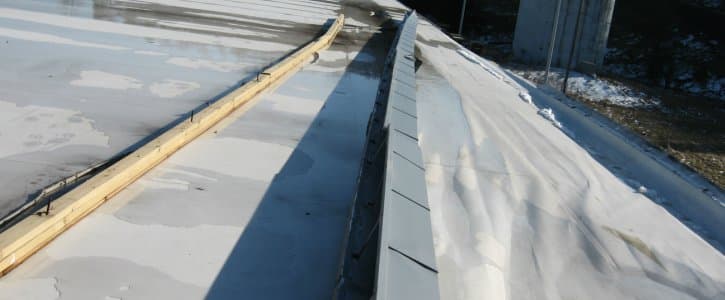
Is a roof coating worth the investment? Some buildings can benefit from the addition of a roof coating, but in other cases, it adds unnecessary expenses and potential issues. To get the most value and longevity out of a roof system, building owners and facilities managers should know when – and when not – to opt for a roof coating.
Pros: When a Roof Coating is the Right Choice
Though a coating is not a suitable choice for every application, they do have a place in the roofing industry. Consider a roof coating to:
- Protect an investment in expensive materials: On roofs with steep slope metal applications, coatings can prolong the life of the metal. Later on, repairs can often focus on the coating itself, and not the more expensive metal that the coating protects.
- Provide a temporary, budget-friendly repair: Contractors can use a roof coating to patch a failing membrane. If budget shortfalls or other concerns are prolonging repairs, coatings can be a quick, Band-Aid fix to prevent leaks until the capital is available for complete repairs. However, this might void the warranty, so consult closely with your contractor first.
- Increase energy efficiency: Cool roof applications can make built-up roofs or other black surfaces more energy efficient in hot climates. In some cities, highly reflective coatings are required to reflect light and heat away from buildings.
Cons: The Drawbacks of Roof Coatings
Owners and managers are right to pause and consider before opting for a roof coating. Be aware that:
- A mistake in preparation can undermine the entire coating: To correctly install a coating, the underlying substrate must first be cleaned and prepared meticulously. Any coating will quickly fail if contractors do not complete this step in whole or in part.
- Ponding destroys coatings: Owners and managers should avoid installing an acrylic coating on any roof system with even a small standing water problem. Ponding water will degrade virtually all acrylic coatings and cause them to fail. In many cases, the coating will peel off in large sheets.
- Coatings may be an unnecessary expense: Coatings are often considered an economical way of increasing a roof’s reflectivity to reduce cooling costs. However, a coating is not always necessary if enough insulation is installed – which negates the need for any thermal coating to help cool a roof in hot climates.
- Coatings aren’t the most economical option: Finally, there is the issue of cost. For many flat-roof applications, a single-ply membrane installation is more economical than a roof coating installation.
Some applications can benefit from a roof coating – particularly when owners will use the coating either to protect expensive roofing materials or to create long-term savings by increasing energy efficiency. In other cases, coatings aren’t a wise investment; the benefits simply do not outweigh the risks. When in doubt, building owners should consult an experienced roof partner to determine the best choice for their roof system.
